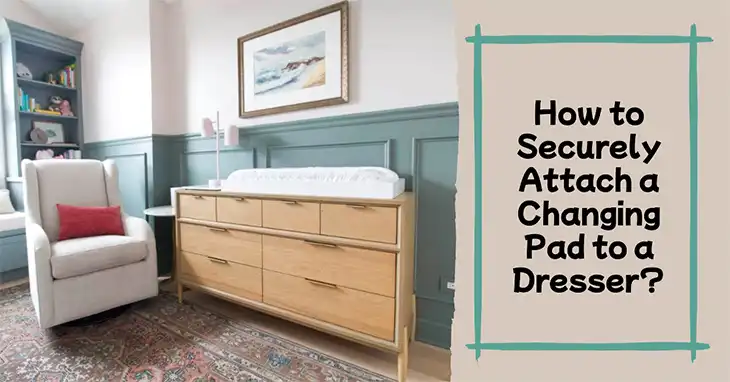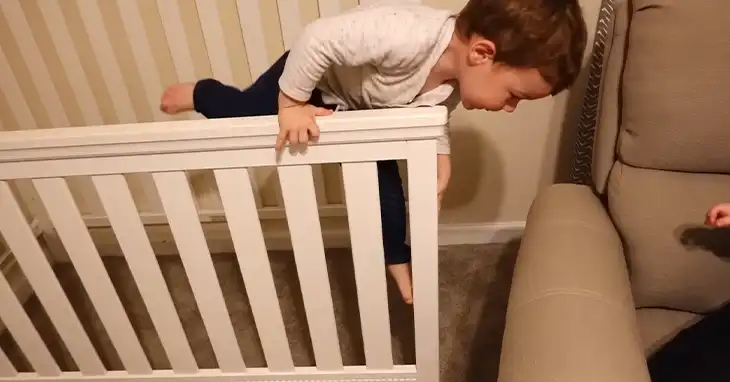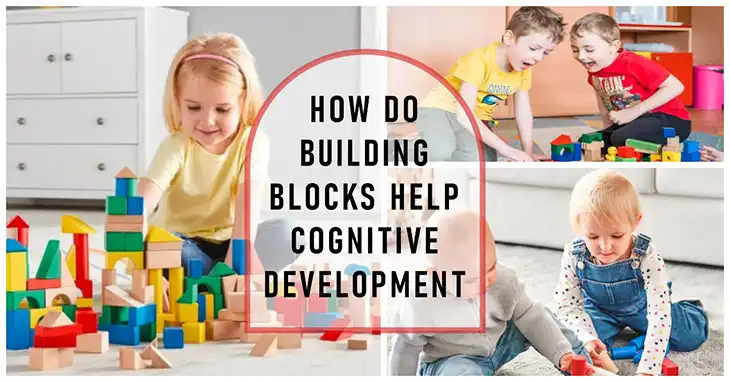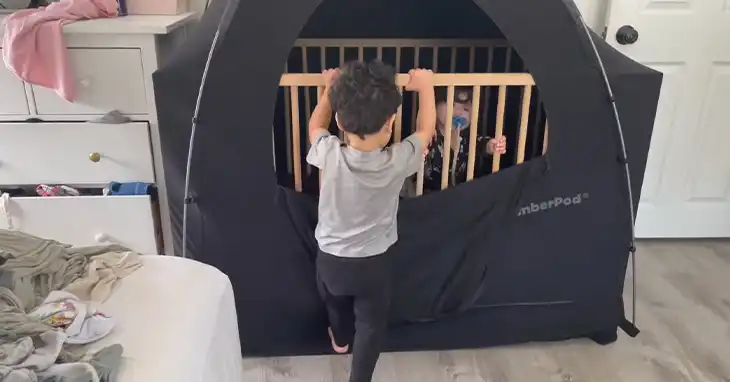How To Lower Mattress In Crib The Easy Way
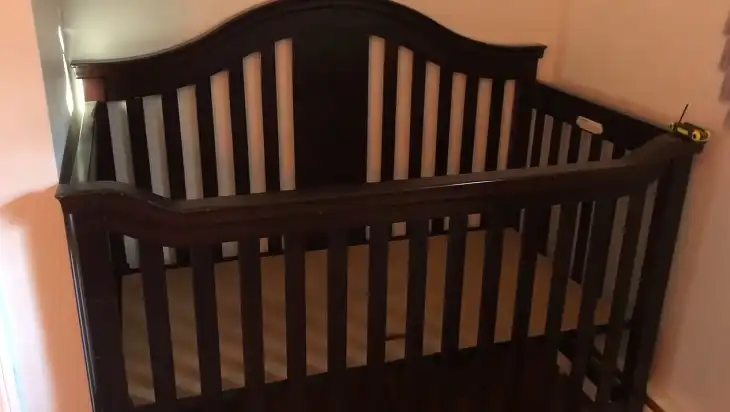
As a new parent, ensuring your baby’s safety is always top priority. One crucial aspect of this is knowing when and how to lower your baby’s crib mattress.
As your little one grows and becomes more mobile, adjusting the mattress height is essential to prevent falls and keep your baby secure while they sleep.
This guide will walk you through the why, when, and how of lowering your crib mattress, so you can rest easy knowing your baby is safe and comfortable in their crib.
From the newborn stage to those first wobbly steps, we’ll cover the key milestones that signal it’s time to make adjustments.
We’ll also provide step-by-step instructions on how to lower the mattress safely, along with important crib safety tips to keep in mind.
Whether you’re a first-time parent or just need a refresher, this article will give you all the information you need to ensure your baby’s sleeping space grows with them.
How to Lower the Crib Mattress
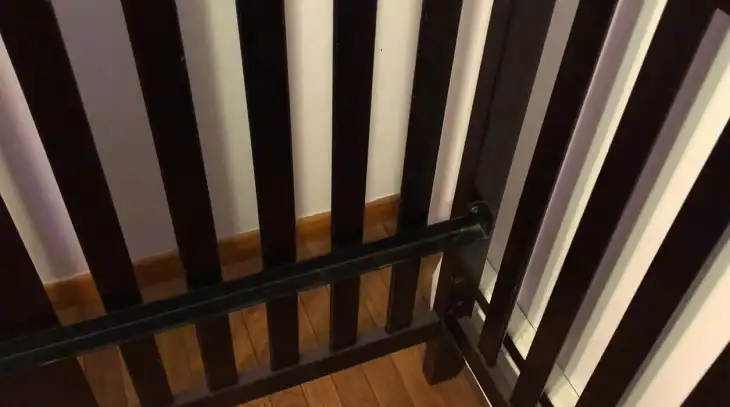
Let’s go through the steps of how to do it safely and effectively.
General Steps
- Remove all bedding and the mattress from the crib.
- Locate the bolts or screws that hold the mattress support in place.
- Unscrew these bolts, keeping them safe as you’ll need them again.
- Lower the mattress support to the desired height setting.
- Replace and tighten the bolts securely.
- Place the mattress back in the crib.
- Replace the bedding.
Safety Checks
After lowering the mattress, it’s crucial to perform a few safety checks:
- Ensure all bolts are tightened securely.
- Check the overall stability of the crib by gently shaking it.
- Press firmly on the mattress to make sure it’s sturdy and doesn’t move.
- Double-check that there are no gaps between the mattress and the crib sides.
Remember, always refer to your crib’s instruction manual for specific guidance, as different models may have slightly different adjustment methods.
Why Lowering the Crib Mattress is Important
As your baby grows, their sleeping needs change rapidly. Lowering the crib mattress is a crucial step in adapting their sleeping environment to keep pace with their development. Let’s explore why this simple adjustment is so important.
1. Safety Considerations
The primary reason for lowering the crib mattress is safety. As babies become more mobile, there’s an increased risk of them climbing or falling out of the crib.
By adjusting the mattress height, you create a safer sleeping space that accommodates your baby’s growing abilities.
2. Adapting To Baby’s Development
Each developmental milestone your baby reaches – from rolling over to sitting up and eventually standing – requires a change in their sleeping environment.
By lowering the mattress at the right times, you’re ensuring that your baby’s crib remains a safe and comfortable space throughout their early years.
When to Lower the Crib Mattress
Knowing when to lower your baby’s crib mattress is key to maintaining a safe sleep environment. Let’s break down the different stages and corresponding mattress heights.
1. Newborn Stage (Highest Setting)
When you first bring your baby home, the crib mattress should be at its highest setting.
This makes it easier for you to lift your newborn in and out of the crib, reducing strain on your back during those frequent night feedings and diaper changes. This setting is suitable for babies who aren’t yet able to roll over or push themselves up.
2. When Baby Starts Sitting Up (Middle Setting)
Around 5-8 months, most babies start to master the art of sitting up unassisted. This is your cue to lower the mattress to the middle setting.
At this stage, your baby can see more of their surroundings and may start reaching for toys or the crib sides. The middle setting provides a good balance between accessibility for parents and safety for the increasingly mobile baby.
3. When Baby Starts Pulling Up Or Standing (Lowest Setting)
The next big milestone to watch for is when your baby starts pulling themselves up to stand. This typically happens between 6-8 months, but every baby is different.
As soon as you notice your little one attempting to pull up to standing, it’s time to lower the mattress to its lowest setting. This prevents your baby from being able to climb or fall out of the crib.
4. Transitioning to a toddler bed
When your child reaches about 35 inches in height or starts showing signs of trying to climb out of the crib, it’s time to consider transitioning to a toddler bed.
This usually happens around 2-3 years of age, but again, every child is different. Many cribs can be converted to toddler beds using conversion kits, making this transition smoother.
Crib Safety Tips
While adjusting the mattress height is crucial, it’s just one aspect of overall crib safety. Here are some additional tips to ensure your baby’s sleeping environment is as safe as possible.
Meeting Safety Standards
Ensure your crib meets current safety standards. The American Academy of Pediatrics recommends using cribs manufactured after June 2011, when new safety standards were implemented. These newer cribs have features like:
- No drop sides
- Stronger slats and mattress supports
- Improved hardware
Avoiding Hazards In The Crib
Keep the crib free from potential hazards:
- Remove pillows, blankets, and stuffed toys from the crib to reduce the risk of suffocation.
- Avoid using crib bumpers, as they can pose a suffocation risk.
- Ensure there are no dangling cords, wall shelves, or other objects within reach of the crib.
Safe Sleep Practices
Follow these safe sleep guidelines:
- Always place your baby on their back to sleep.
- Use a firm, well-fitting mattress designed for cribs.
- Keep the room at a comfortable temperature to avoid overheating.
- Consider using a sleep sack instead of loose blankets for warmth.
- Share a room (but not a bed) with your baby for at least the first six months.
Final Words
Lowering your baby’s crib mattress is a simple yet crucial step in ensuring their safety as they grow and develop. By understanding when and how to make these adjustments, you’re creating a secure sleep environment that adapts to your baby’s changing needs.
Remember to always prioritize safety by following current guidelines, keeping the crib free from hazards, and practicing safe sleep habits. With these measures in place, both you and your baby can rest easy, knowing that their sleeping space is safe and comfortable at every stage of their early development.
Frequently Asked Questions
1. How Do I Lower the Height of My Crib Mattress?
To lower the height of your crib mattress, locate the screws or bolts at the base of the crib that hold the mattress support in place. Unscrew these carefully, then slowly lower the mattress support to the desired level.
Once the mattress is at the correct height, securely tighten the screws or bolts to ensure the mattress is stable and safe for your baby.
2. Can You Drop A Crib Mattress To The Floor?
Yes, you can drop a crib mattress to the floor, but it’s important to ensure that there’s no gap between the bottom of the crib rails and the top of the mattress.
If a gap exists, it could pose a safety hazard by allowing your baby to become trapped. This setup can be a good option if your baby is getting taller but not yet ready for a toddler bed.
3. Do All Cribs Have Adjustable Height?
Most modern cribs come with adjustable mattress heights, allowing you to raise or lower the mattress as your baby grows. Typically, cribs offer two or three height settings, but it’s always best to check the specific model you’re considering to ensure it has the adjustability you need.
4. How Can I Lower the Height of My Mattress?
If your bed frame is adjustable, you can simply lower it to your desired height. Some bed frames have adjustable legs or slats that allow you to modify the height. Alternatively, you can place the mattress directly on the floor or remove any additional layers, such as a box spring, to achieve a lower height.
5. What Height Should a Crib Mattress Be?
The height of a crib mattress should be adjusted based on your baby’s age and mobility. For newborns, the mattress can be set at its highest position to make it easier to lift the baby in and out.
As your baby begins to sit up and pull up, you should lower the mattress to prevent falls. A common recommendation is to lower the mattress once your baby reaches 5 or 6 months of age.
6. At What Height is it No Longer Safe for a Toddler to Sleep in a Crib?
It is generally recommended that a toddler should no longer sleep in a crib once they reach 35 inches tall. At this height, they are likely able to climb out of the crib, which poses a significant safety risk. Transitioning to a toddler bed at this point is usually the safest option.
7. Are Drop Down Cribs Illegal?
Yes, drop-side cribs are considered unsafe and have been banned due to safety concerns. The design of drop-side cribs has been linked to numerous injuries and deaths, leading to their prohibition in many countries, including the United States. It’s recommended to use a fixed-side crib to ensure your baby’s safety.



